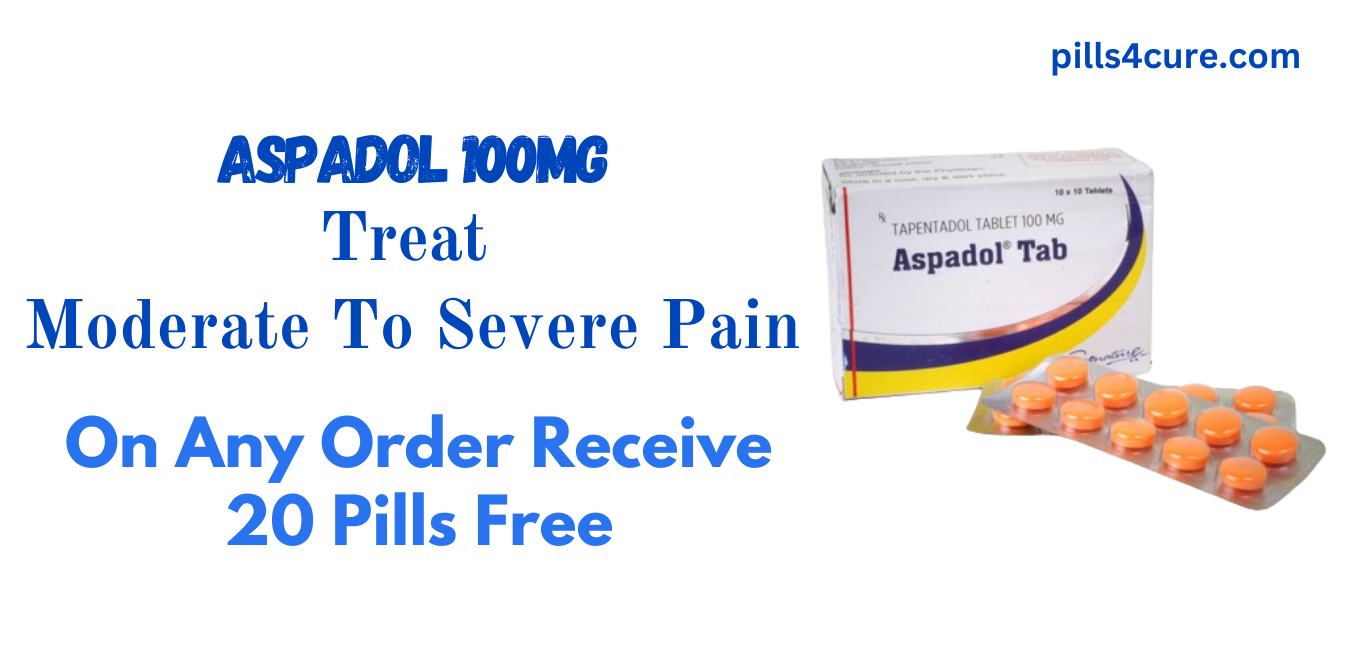5 Lies Delhi Escortss Tell
Noida Extension has now turn out to be the hub of India’s luxury real property sector with large variety of
In the realm of pain management, pharmaceutical advancements have led to the development of various medications tailored to alleviate discomfort effectively. Among these, Aspadol 100mg stands out as a notable option, renowned for its pain-relieving properties. This article delves into the intricacies of Aspadol 100mg, exploring its mechanism of action, therapeutic benefits, potential side effects, and considerations for use.
Aspadol 100mg, also known by its generic name Tapentadol, belongs to a class of medications called opioid analgesics. It is primarily prescribed to manage moderate to severe pain, such as that experienced after surgery or due to chronic conditions like neuropathy or osteoarthritis. Unlike traditional opioids, Aspadol offers a dual mechanism of action, combining mu-opioid receptor agonism and norepinephrine reuptake inhibition. This unique pharmacological profile not only provides effective pain relief but also potentially reduces the risk of certain opioid-related side effects, such as respiratory depression and constipation.
The pain-relieving properties of Aspadol 100 mg stem from its interactions with the body’s opioid receptors and the noradrenergic system. Upon administration, Aspadol binds to mu-opioid receptors in the central nervous system, inhibiting the transmission of pain signals and modulating pain perception. Additionally, Pain-Relieving Aspadol acts as a norepinephrine reuptake inhibitor, prolonging the activity of norepinephrine in the synaptic cleft. This dual mechanism not only provides potent analgesia but also offers potential benefits in terms of improved tolerability and reduced risk of tolerance development compared to traditional opioids.
The efficacy of Aspadol 100mg in pain management has been demonstrated across various clinical settings. Studies have shown its effectiveness in relieving acute postoperative pain, chronic neuropathic pain, and musculoskeletal pain conditions. Furthermore, Aspadol’s unique mechanism of action may make it particularly suitable for patients who have not responded adequately to other analgesic agents or who are at risk of opioid-related adverse effects. Its extended-release formulation also allows for convenient once- or twice-daily dosing, enhancing patient compliance and convenience.
While Aspadol 100mg offers promising pain relief, it is essential to consider several factors before prescribing or using this medication. Firstly, Aspadol should be used with caution in patients with a history of substance abuse, as it has the potential for misuse, addiction, and dependence. Healthcare providers should conduct a thorough assessment of each patient’s pain condition, medical history, and risk factors before initiating treatment with Aspadol. Additionally, patients should be educated about the proper use of Aspadol, including dosage instructions, potential side effects, and the importance of avoiding alcohol and other central nervous system depressants while taking this medication.
Like all medications, Aspadol 100mg may cause side effects in some individuals. Common side effects include nausea, dizziness, constipation, headache, and drowsiness. These side effects are typically mild to moderate in severity and often subside with continued use or dose adjustment. However, more serious adverse effects, such as respiratory depression, serotonin syndrome, and allergic reactions, may occur in rare cases and require immediate medical attention. Healthcare providers should monitor patients closely for signs of adverse effects and adjust treatment as necessary to minimize risks.

Related Product: Tapaday 200 mg
In conclusion, Aspadol 100mg offers a valuable therapeutic option for managing moderate to severe pain effectively. Its dual mechanism of action, combining mu-opioid receptor agonism and norepinephrine reuptake inhibition, provides potent analgesia while potentially reducing the risk of certain opioid-related side effects. However, like all opioid medications, Aspadol should be used judiciously, with careful consideration of each patient’s individual needs, medical history, and risk factors. By understanding Aspadol’s mechanism of action, therapeutic benefits, potential side effects, and considerations for use, healthcare providers can optimize pain management outcomes and improve patient care.
Noida Extension has now turn out to be the hub of India’s luxury real property sector with large variety of
Uw gemoedsrust en tevredenheid staan bij ons voorop, dus aarzel niet om contact met ons op te nemen in geval